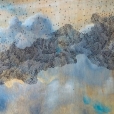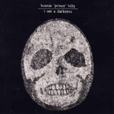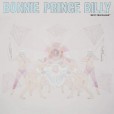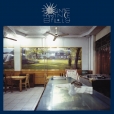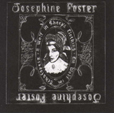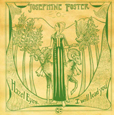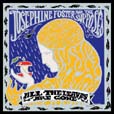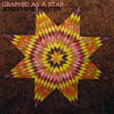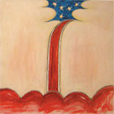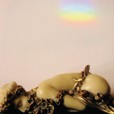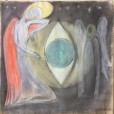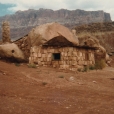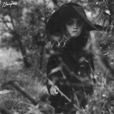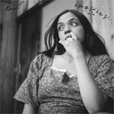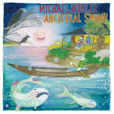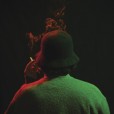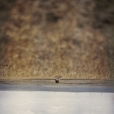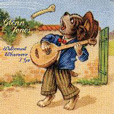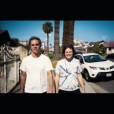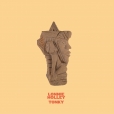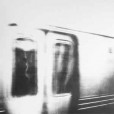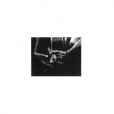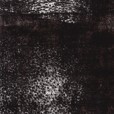Your basket is empty

West Virginia Snake Handler Revival
They Shall Take Up Serpents
Sublime Frequencies
Electrifying extracts from a Sunday service in the last snake-handling church in the Appalachians: the trance-like rhythms of a demented kind of rockabilly punk, with duelling guitars, concussive trap drums, and possessed, howling vocals.
“I’d sworn to stay far away from the snakes at the service,” recalls the recording engineer, “but instead they were waved in my face as they coiled in the preachers’ hands, and I crouched down at the foot of the altar tending to the equipment. The pastor soon was bitten and blood splattered, pooling on the floor. The female parishioners hurriedly came to wipe up the mess, and it instantly became clear just what the rolls of paper towels stacked on the pulpit had been for. You can actually hear this moment transpire towards the end of the track ‘Don’t Worry It’s Just a Snakebite (What Has Happened to This Generation?)’. The congregation leapt to its feet and a mini mosh-pit formed. The tag-team preachers huffed handkerchiefs soaked in strychnine, as they circled like aggro frontmen and an elderly worshipper held the flame of a candle to her throat, closing her eyes and swaying. The church PA blew out from the screams as a bonnet-wearing senior whacked away at a trap kit that dwarfed her. It was the most metal thing I’d ever seen, rendering Slayer mere kids play.”
Lovely. Classical songs by such exemplars as Schubert and Schumann, re-imagined with heart and soul as bare, doleful folk. Just voice and electric guitar.
Terrific — lit-up, reaching and odd — Josephine playing harp, guitar and piano (and singing), with Alex Nielson on drums and Victor Herrero, lead guitar.
Patti Smithed. ‘Lyrically, stylistically and musically, this is a fearless, soon to be classic post-punk rock and roll record that delivers the goods from start to finish.’
Settings of the poetry of Emily Dickinson.
‘A maze of spirituals, on four levels. Ritual prayers, blues laments, vestal hymns and jubilant benedictions hearkening back to the esoteric balladry of This Coming Gladness, the native rhythms of Blood Rushing, the somnambulist waltzes of I’m A Dreamer, and the Shaker primitivism of Hazel Eyes, I Will Lead You. Self-accompaniment on guitar, piano, organ, harp and autoharp, with Victor Herrero (lead guitars), Gyða Valtýsdóttir (cello), Chris Scruggs (pedal steel) and Jon Estes (bass), as well as cameos by members of The Cherry Blossoms and others.’
Clear vinyl.
Previously-unreleased recordings from the same period as Dead Deer.
Laid-right-back — with old buddies Dave Reisch and Lewi Longmire, and Tara Jane O’Neil; a Blind Willie McTell and a Lightning Hopkins; and unmissable goes at favourites like Light Green Fellow. One of the very best Hurleys of them all.
‘A moody, atmospheric delight. Jim’s roots in composition via tape-editing have evolved into a highly musical assembly of found-and-processed sounds that achieve near-orchestral majesty as they hang in the very air of the drama that unfolds in Kyle Armstrong’s Hands That Bind.
‘Described as a ‘slow-burn prairie gothic drama’, set in the farmland of Canada’s Alberta province, and starring Will Oldham and Bruce Dern, Hands That Bind is a spellbinding trip to the existential bone of rural working life in North America. As conflict rises over hard worked patches of land to provide a mere and mean existence, a desperate air settles in, as a series of mysterious, often supernatural occurrences rock the small community.
‘O’Rourke’s vaporous, serpentine musical backdrops and atmospheres reflect the obsessions and distractions of the film’s principles; moods of all sorts seen or otherwise implied. Additionally, the music highlights cinematographer Michael Robert McLaughlin’s closely observed accounting of the farmers’ environment, as well as the striking widescreen images of the big sky country with unnerving flair.’
‘Committed to tape on February 20, 1979… a real declaration of identity for Loren. He was introducing himself publicly as a guitar player, although his approach was still very much dictated by the influence of the painter, Mark Rothko, who Loren once described as using a minimal palette to create vital art… The feel to this session is bluesy, in as much as Loren’s wordless vocals have a surface similarity to a hellhound’s, and while he was not using a slide, most of the notes he plays are bent to the edges of their known range. Fahey always said blues was ‘about’ anger, though there’s not really any of that here. I am more reminded of this Rothko quote. ‘You’ve got sadness in you, I’ve got sadness in me ... and my works of art are places where the two sadnesses can meet, and therefore both of us need to feel less sad.’ The first side is solo. On the second Loren is joined for a bit by Kath on hums and recorder. The music brims with sorrow more than anything else. And while it’s clear Loren was embracing an abstract avant garde aesthetic vis-a-vis his playing, the urge to communicate seems to lie at its roots. Whatever you choose to call it, this is the beginning of something quite beautiful’ (Byron Coley).


